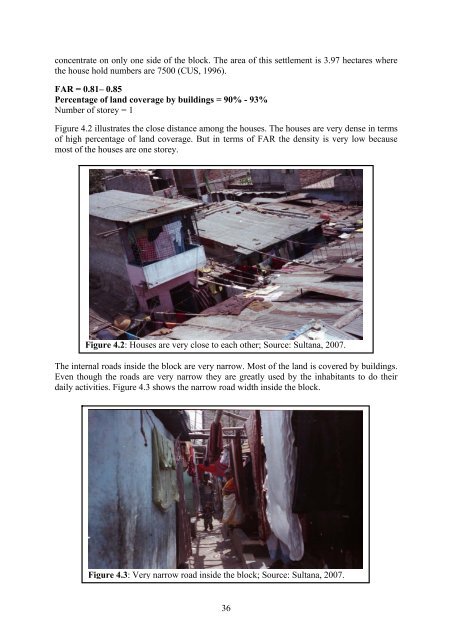Physical Density and Urban Sprawl: A Case of Dhaka City - KTH
Physical Density and Urban Sprawl: A Case of Dhaka City - KTH
Physical Density and Urban Sprawl: A Case of Dhaka City - KTH
Create successful ePaper yourself
Turn your PDF publications into a flip-book with our unique Google optimized e-Paper software.
concentrate on only one side <strong>of</strong> the block. The area <strong>of</strong> this settlement is 3.97 hectares where<br />
the house hold numbers are 7500 (CUS, 1996).<br />
FAR = 0.81– 0.85<br />
Percentage <strong>of</strong> l<strong>and</strong> coverage by buildings = 90% - 93%<br />
Number <strong>of</strong> storey = 1<br />
Figure 4.2 illustrates the close distance among the houses. The houses are very dense in terms<br />
<strong>of</strong> high percentage <strong>of</strong> l<strong>and</strong> coverage. But in terms <strong>of</strong> FAR the density is very low because<br />
most <strong>of</strong> the houses are one storey.<br />
Figure 4.2: Houses are very close to each other; Source: Sultana, 2007.<br />
The internal roads inside the block are very narrow. Most <strong>of</strong> the l<strong>and</strong> is covered by buildings.<br />
Even though the roads are very narrow they are greatly used by the inhabitants to do their<br />
daily activities. Figure 4.3 shows the narrow road width inside the block.<br />
Figure 4.3: Very narrow road inside the block; Source: Sultana, 2007.<br />
36

















